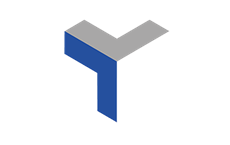7 secrets to successful software implementation and automated business workflows

Are you looking to improve your AP or AR processes and automate business workflows, but don’t know where to begin? You’re not alone. Coordinating department workloads while transitioning from legacy to digital systems can make achieving successful software implementation challenging.
In this article, Tungsten Network’s Diann Ferguson and Jo Harris share seven industry secrets that are essential to understanding how to automate business processes and implement new software successfully. Find out how to make your organisation’s digital transition to e-invoicing seamless below.
How to automate business processes with 7 industry secrets
1) Define the project end-goals
Successful software implementation can’t be achieved without setting fixed goals. That’s why it’s crucial to establish what function or solution any new software launch should provide in advance.
For example, modern finance software can help businesses operate without physical paperwork, manage data in real-time and send or receive payments more quickly. Each function relies on one another, but each requires different steps to achieve. Businesses need to comprehensively define their desired end-goals and the necessary strategies to achieve them.
2) Select progression criteria
Successful automation teams know how to measure progress accurately when implementing software. The secret is choosing metrics directly related to the end goal(s). For example, finance software progress can be measured in the ratio of paper-to-digital invoices or changes to paperwork processing costs. Consistent criteria make updating senior stakeholders and project staff more effective as the project develops.
Progress measurements also need to account for the hidden elements in workflow processes. The secret is involving staff who understand how current performance is delivered and identifying the human skills that need to be automated also.
3) Identify potential hurdles and plan efficient workarounds
Digital transformations are rarely frictionless. Project managers must recognise pain points and hurdles in the proposed timeline, especially if the software implementation is time-sensitive or relies on complex inputs.
One of the easiest methods is to work within the 80/20 rule: when considering how to automate business workflows, begin standardising those most representative of the total workload. For example, firms that represent the largest share of invoices can be converted to the new software first, delivering considerable progress gains early on.
4) Assign roles and responsibilities
Automation teams need the right people and planning. The secret to creating effective teams is ensuring that staff have a shared understanding of their workload, what needs documenting throughout the process, and where the project is ultimately heading.
Involving end-users of any new software is critical as their roles and workload will evolve throughout the software’s implementation.
5) Prioritise steady development
Automating business workflows requires digital resources in the form of IT infrastructure as much as it does human resources. A further secret to implementing software successfully is introducing gateways between project phases to ensure progress is advancing steadily across departments.
Otherwise, misalignment between teams can derail timelines and future projects that rely on the new software’s functionality.
6) Ensure strong communication and visibility
Communication of workloads and progress within teams is a vital element during any digital transition.
Weekly performance check-ins are helpful so that project leaders can update strategy sheets and RAG documents documenting progress. Communication and visibility of progress can also help address schedule shortfalls before they impact other departments.
Similarly, updating staff using the same end-goal criteria from when the project began can help make progression updates clearer and motivate staff more effectively.
7) Promote effective governance and oversight
Finally, involvement from senior stakeholders is a highly important aspect of workflow automation. Senior leadership that are invested in project updates can help spur staff motivation, and updates from management staff can ensure struggling teams are equipped with the resources they need to complete phases.
However, governance updates should be less frequent than project team check-ins, so project budgets don’t run over prematurely.
Ready your business for the next generation of financial performance
New digital finance technologies hold the key to accelerated growth for businesses looking to improve their efficiency, reduce their overheads and build robust tax compliance. However, software implementation can invite operational challenges, especially as staff are siloed across departments and working spaces.
Transitioning to more efficient or secure invoicing processes needn’t be difficult as long as your organisation follows the seven secrets to successful software implementation.
Implement software with an expert finance software provider
Get end-to-end transparency in 100% of your invoice data and utilise expertise from a leading finance management partner. Take advantage of highly effective accounts automation and analytics tools with Total AR and Total AP from Tungsten Network.
Interested in learning more?
Get in touch with us today to begin your journey to world-class finance optimisation.



